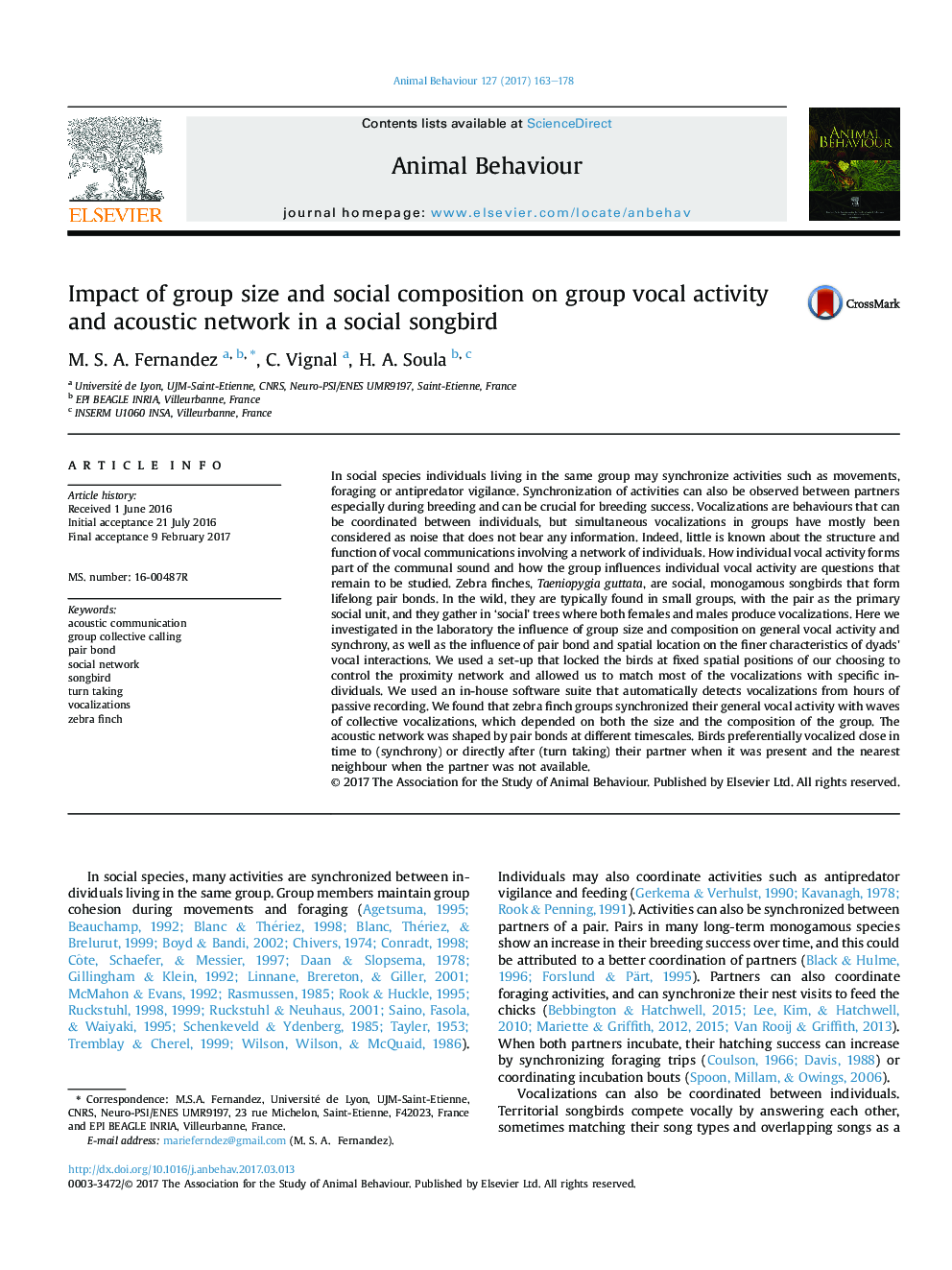| Article ID | Journal | Published Year | Pages | File Type |
|---|---|---|---|---|
| 5538348 | Animal Behaviour | 2017 | 16 Pages |
Abstract
In social species individuals living in the same group may synchronize activities such as movements, foraging or antipredator vigilance. Synchronization of activities can also be observed between partners especially during breeding and can be crucial for breeding success. Vocalizations are behaviours that can be coordinated between individuals, but simultaneous vocalizations in groups have mostly been considered as noise that does not bear any information. Indeed, little is known about the structure and function of vocal communications involving a network of individuals. How individual vocal activity forms part of the communal sound and how the group influences individual vocal activity are questions that remain to be studied. Zebra finches, Taeniopygia guttata, are social, monogamous songbirds that form lifelong pair bonds. In the wild, they are typically found in small groups, with the pair as the primary social unit, and they gather in 'social' trees where both females and males produce vocalizations. Here we investigated in the laboratory the influence of group size and composition on general vocal activity and synchrony, as well as the influence of pair bond and spatial location on the finer characteristics of dyads' vocal interactions. We used a set-up that locked the birds at fixed spatial positions of our choosing to control the proximity network and allowed us to match most of the vocalizations with specific individuals. We used an in-house software suite that automatically detects vocalizations from hours of passive recording. We found that zebra finch groups synchronized their general vocal activity with waves of collective vocalizations, which depended on both the size and the composition of the group. The acoustic network was shaped by pair bonds at different timescales. Birds preferentially vocalized close in time to (synchrony) or directly after (turn taking) their partner when it was present and the nearest neighbour when the partner was not available.
Related Topics
Life Sciences
Agricultural and Biological Sciences
Animal Science and Zoology
Authors
M.S.A. Fernandez, C. Vignal, H.A. Soula,
